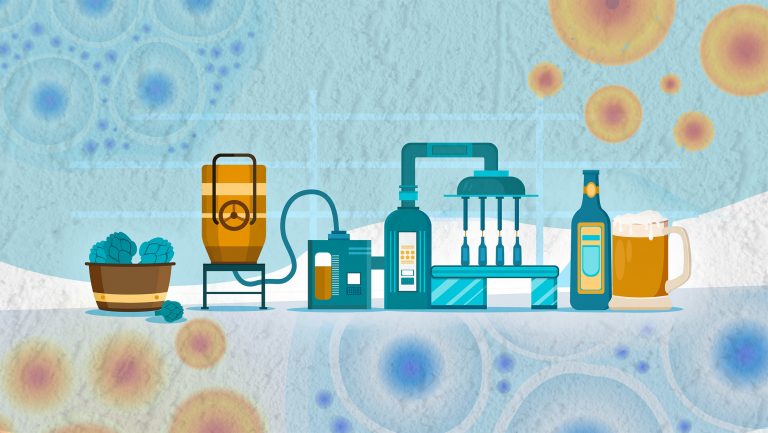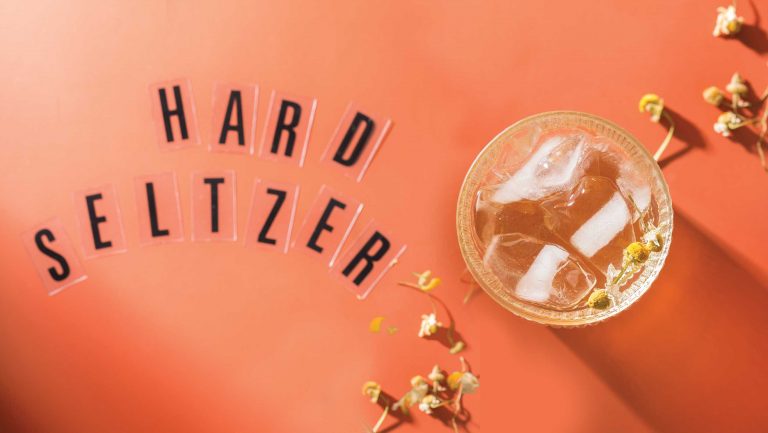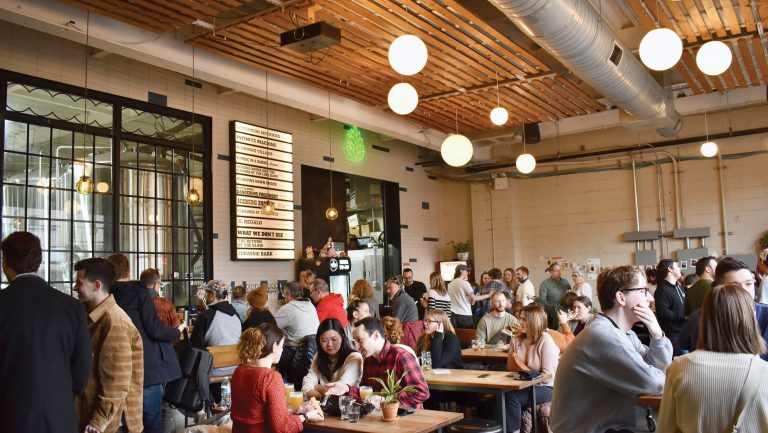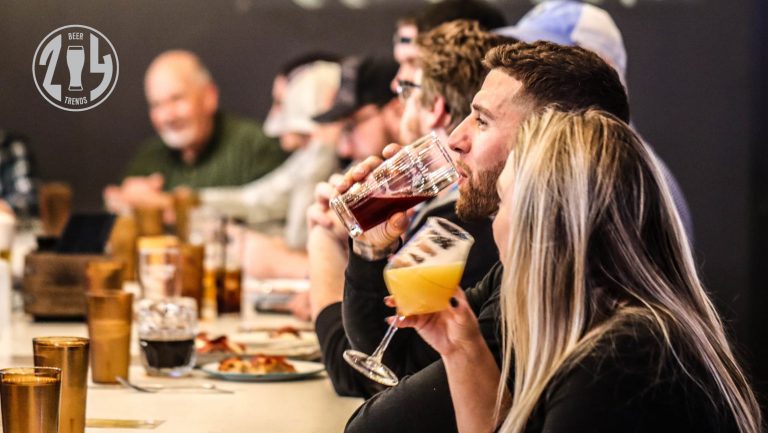At 2nd Shift Brewing in St. Louis, Steve Crider takes his sweet time creating Technical Ecstasy. The brewer cold-conditions his traditional Czech-style pilsner for three months, its soft yet snappy profile resistant to rushing. “I’ve tried to shorten that up and it just wasn’t the same,” says Crider, who co-owns the brewery with his wife, Libby.
Good lagers require waiting, Crider reckoned, until a beer podcast rewired his timeline. Some three years ago, he listened to brewers laud Oslo, a strain of quick-working Norwegian farmhouse yeast called kveik, that fermented squeaky-clean faux lagers in as few as three days. “I was like, ‘Holy shit, that sounds amazing,’” says Crider.
He sourced Oslo from Bootleg Biology, a yeast lab and supplier in Nashville, Tennessee, and created low-alcohol Lucy, a lager-like beer that goes from grain to glass in one week. “If we brew on Monday, the next Monday it’s carbonated, packaged, and done,” says Crider.

Don’t miss the latest drinks industry news and insights. Sign up for our award-winning newsletters and get insider intel, resources, and trends delivered to your inbox every week.
Despite the hazy IPA onslaught, America’s favorite beer style remains the refreshing lager. Seeking wider audiences, craft breweries are making approachable pilsners and light lagers. The trade-off is a production process that can take over a month, crimping production of ales that can be made and sold in just a few weeks. Brewing can boil down to dollars and common sense.
As a workaround, breweries are using fast-fermenting kveik strains to fashion refreshing, lager-like beers in a fraction of the time. “It’s a lower barrier to entry,” says Richard Preiss, a cofounder and the lab director of Canada’s Escarpment Labs, located about an hour southwest of Toronto. “Brewers don’t have to worry about tying up a tank for eight weeks.”
A Boon to Business
Yeast strains are mysterious. Brewers and laboratories crack their transformative codes by figuring out favored temperatures and conditions to ferment great beer. Early on, many kveik cultures imparted fruity characteristics, leading breweries to create citrusy, tropical IPAs.
Bootleg Biology founder Jeff Mello tested Oslo with an eye toward IPAs, but this strain’s neutral profile felt like a fatal flaw. Disappointment sparked inspiration: Forget IPAs. Could breweries quickly ferment a passable lager? Bootleg Biology released Oslo in early 2019 and “it just took off like crazy,” says Mello.

The strain proved useful at breweries such as Southern California’s Long Beach Beer Lab, where serving crisp, approachable, and well-priced beers was important to brewer Levi Fried, a co-owner with his wife, Harmony Sage. Fried now uses kveik strains to make several snappy beers such as the pilsner-like Dad Beer, one of the brewery’s best bang-for-your-buck drafts. Compared to the brewery’s traditional pilsners, “they’re usually about $1 to 50 cents cheaper per pint,” says Fried.
Many breweries produce pseudo-lagers to keep taps stocked with a lighter, easygoing beer. During warmer months, Fifth Hammer Brewing in Queens, New York, regularly runs out of pilsners such as Neighborbräu and Desert Rain, which takes some six weeks to make. Instead of keeping lines empty while awaiting batches, “we can fill that gap,” says co-owner Mary Izett. In less than 10 days, Fifth Hammer can pour pints of Haelstrom fermented with Lutra, a kveik strain from Omega Yeast in Chicago. “Some people prefer Haelstrom over Desert Rain,” says Izett.
Managing Consumer Expectations with Naming
Making pseudo-lagers is easier than naming them. The brewing industry typically classifies beers as ales and lagers based on the type of yeast used for fermentation, but kveik strains break that binary. Instead of focusing on what’s under the microscope, breweries name these kveik ferments after a finished beer’s flavor profile, which is key to managing consumer expectations.
At first, Fifth Hammer called its kveik creations “virtual lagers,” a confusing phrase in a world on Zoom. The brewery has since embraced the term “Nordic lager.” “That seems to work very well for customer perception,” says Izett.
The description is not a deception to federal agencies like the Alcohol and Tobacco Tax and Trade Bureau (TTB), which approves labels. “The TTB basically says that as long as it presents like a lager, you can call it a lager,” says Izett.
That’s the sentiment at 2nd Shift. “Lucy tastes like a clean lager and smells like a clean lager,” says Crider. “So if it quacks like a duck and acts like a duck, then it is a duck.”

At Old Irving Brewing in Chicago, co-owner and head brewer Trevor Rose-Hamblin has made several clean-drinking beers with Lutra, including the hop-forward Betamax and Relax, which he calls an India pale “lager”—emphasis on the quotation marks. “I personally don’t consider them lagers because you’re not storing them,” says Rose-Hamblin. (Lagers are derived from the German phrase lagern, which means to rest or store.)
Nonetheless, it’s incumbent upon breweries to deliver descriptive verbiage. Last year, Rose-Hamblin brewed two batches of Lutra-fermented Hokum, a winking nod at the beer’s somewhat ridiculous duality. He also communicated the beer’s clarity, crispness, and enhanced aromatics by calling it a hoppy lager. “You’re managing consumer expectations in a logical way,” he says.
Yeast Labs Strive for Steady Flavors
Consumers expect their favorite beers to taste the same, time and again. Many lab-derived yeast strains have proven their dependability over the years and decades. Kveik remains a relatively unexplored family of cultures derived from rustic farmhouse breweries, and the strains haven’t always settled into set ways.
“We are noticing that because they’re wilder yeasts, they tend to mutate a little bit more from generation to generation,” says Fried.
Preiss has also identified this issue. Several years ago, his company began receiving customer requests for strains that could quickly produce lagers, leading the company to revisit kveik strains perceived as too clean. The company isolated several strains, called Krispy, that make “lickety-split (pseudo) lagers,” according to the sales copy.
The culture proved popular but consistency was elusive, so Escarpment Labs selected a single strain and put it through lab evolution. “We basically repitched the yeast for 60 generations,” explains Preiss. “That can really help stabilize a yeast.” The revamped Krispy, released in November, yields a dependably drier and crispier beer—exactly what you’d want in a lager, or whatever you want to call it.
These kveik strains will never deliver a flawless lager facsimile. “If people want to do a side-by-side with an eight-week-old lager, it’s never going to pass that test,” says Mello. Nor should they. Long-aged lagers have a permanent place at bars worldwide—products of process, proper ingredients, and patience. But these unique strains can deliver close-enough refreshment that’s ready whenever customers crave a cold one.
“For people who are trying to make a mass-produced clean tasting beer, I think [kveik] nails it,” says Mello.

Dispatch
Sign up for our award-winning newsletter
Don’t miss the latest drinks industry news and insights—delivered to your inbox every week.
Contributing editor Joshua M. Bernstein is a beer, spirits, food, and travel journalist, as well as an occasional tour guide, event producer, and industry consultant. He writes for the New York Times, Men’s Journal, New York magazine, Wine Enthusiast, and Imbibe, where he’s a contributing editor in charge of beer coverage. Bernstein is also the author of five books: Brewed Awakening, The Complete Beer Course, Complete IPA, Homebrew World, and Drink Better Beer.







